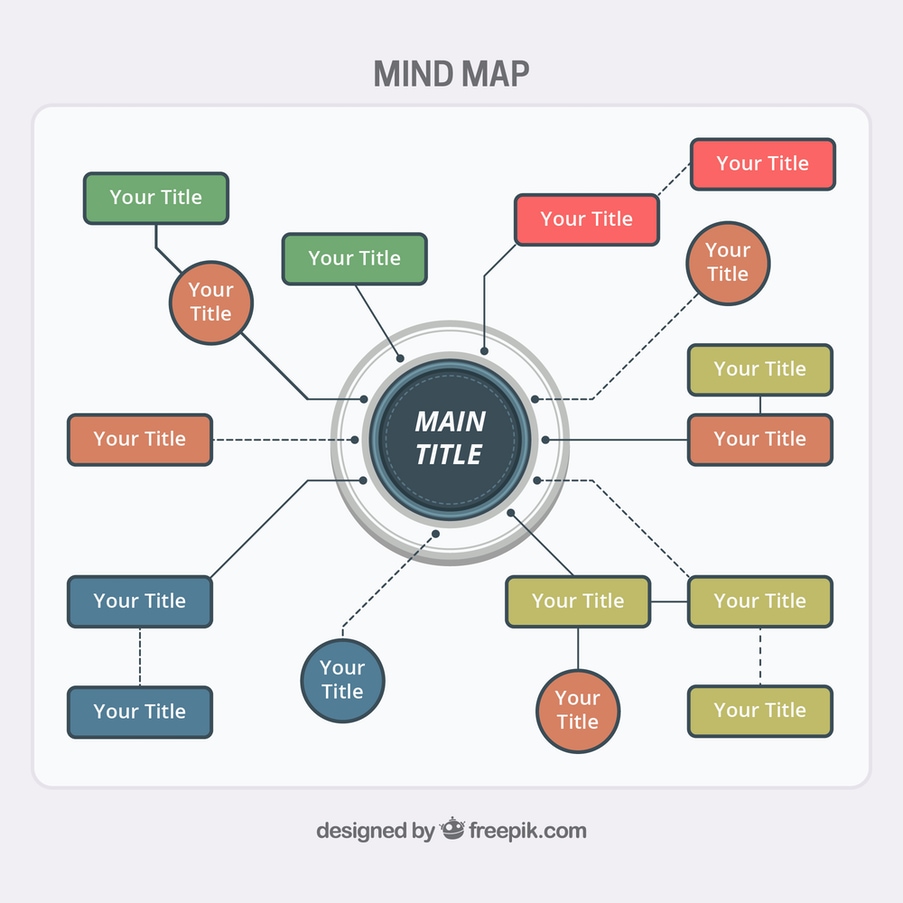Have no idea how to do that?
No worries!
This post will give you all the info on how to outline a book that’s clear and concise enough for all sorts of novels – from romance novels, thrillers, or even non-fiction.
Let’s Start With A Brain Dump
Before you even consider outlining your book, you need to start with a brain dump because this will be useful even if you decide not to.
A brain dump is as simple as it sounds. You are essentially pouring everything you know or think about a subject onto the page. We will be doing this because it removes writer’s block, makes outlining easier, and gets us thinking about new ideas.
There are 3 main ways that you can do your brain dump.
Writing
Pros
- You are free to write anywhere on the page without worrying about formatting.
- You may just be more comfortable writing.
- You can rearrange your pages freely after you finish.
Cons
- It is slower than typing.
- It will be hard to read if your handwriting is messy.
- You will have to transcribe what you have written to the computer.
- Physical pages are easier to lose or damage.
Typing
Pros
- Faster than writing
- You don’t have to transcribe anything that you wrote.
- You can easily go back and edit what you wrote.
Cons
- Requires you to own a computer which could be out of your budget.
- You may not know how to type quickly.
Talking Into A Recording Device
Pros
- Do it on your phone wherever you go
- Allows you to do things like biking or driving, which can speed up your thought process.
- Use transcription software to turn your recordings into text
Cons
- Transcription software can be expensive.
- You need to be comfortable talking to yourself out loud.
To Outline Or Not To Outline
You are probably questioning if you even need to know how to outline a book in the first place.
Unlike every English teacher, this post isn’t here to tell you that you must outline your book to be successful because that isn’t true. Instead, there are a whole host of legendary writers who just put pen to paper and let their imagination take the lead.
You may have heard of the terms plotter and gardener or even planner and pantser. These terms respectively refer to authors who either plan out their stories or discover them as they write. Both of which are valid and proven options, depending on your creative process.
You could even be a mixture of both, but we will focus exclusively on the planning side of things for this post.
How To Create a Mind Map
 After you have dumped all of your ideas into some sort of file, a mind map is an excellent way of organizing them.
After you have dumped all of your ideas into some sort of file, a mind map is an excellent way of organizing them.
To do this, you will want a lot of space to work with. This will mean finding a massive piece of paper for most people, but you can also use online software to make your mind map. Some of which you will have to pay for, but there are also a several free tools out there. Or at least tools with a free trial period.
Making the mind map itself is simple. So simple that you will probably remember doing this same exercise back in your school days.
All you need to do is put the main ideas in the middle and branch out into smaller and smaller details before you know it you will have covered every angle of your book and feel ten times more prepared to get writing.
How To Outline A Book From Your Mind Map
Now that we have our mind map laid out, it’s time to turn it into a legitimate outline.
Once you get into this process, you may even realize that creating the mind map saved you time in the end. You will easily take what’s on your mind and create an outline out of just your thoughts. How amazing is that?
The general theme of your mind map will for now become the title of a work of fiction, or the introduction of a nonfiction one.
Then move down to the larger ideas in your mind map. These will become the sub topics or chapters in your outline. They could be individual chapters or groups of them, depending on the structure of your book.
Finally, fill in each subtopic with progressively in-depth details, and just like that, you have an outline.
Outline Example
1. A Book On Finance
a. Introduction to financeb. Why is it importantc. What you need to get started
2. Investing
a. Know the marketb. Getting startedc.Having a strategyd. Building a portfolio
3. Saving
a.Creating a savings planb. Follow-throughc. Keeping your money safe
4. Retirement
a. Planning aheadb. Downsizingc. Keeping track
Of course, your outline can be as complex or simple as you need it to be. Just remember that it doesn’t have to be complicated.
Conclusion
So, there you have it. The process of how to outline a book is pretty straightforward and fun! If this has been helpful for you or if you want more information on the subject, please click here to schedule a call. We are always ready to help first-time authors get published and to answer any questions you may have.
Finally, we hope this article was helpful for all those aspiring writers looking forward to trying their hand at writing a story but don’t know what they need beforehand!




